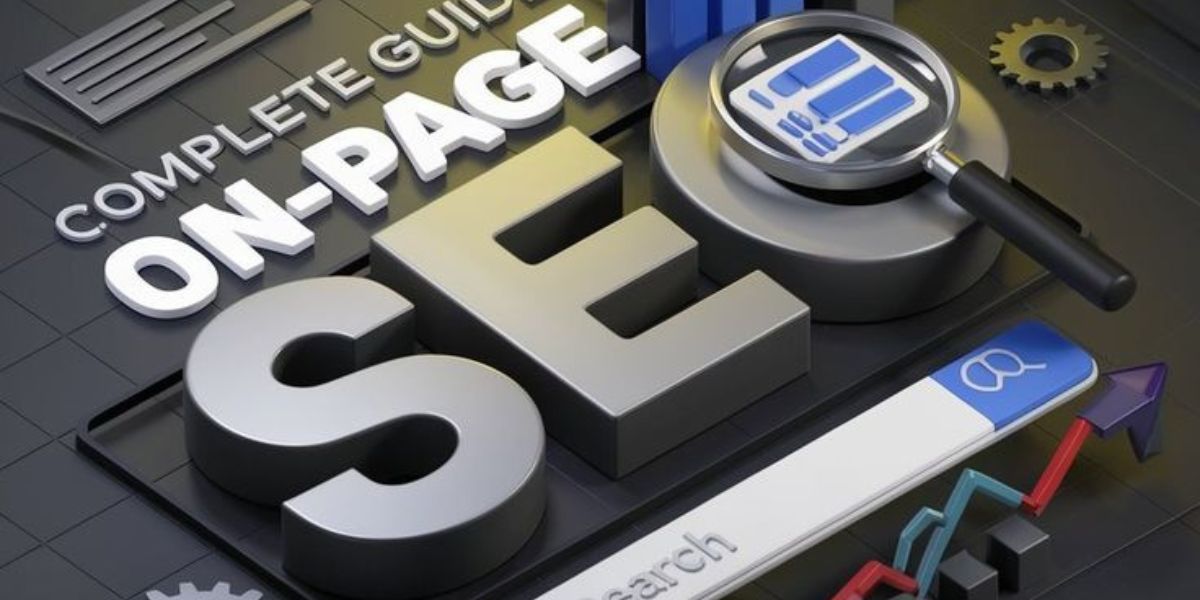If you’re looking to boost your website’s rankings and drive more organic traffic, on-page SEO is your best friend. Search engines love well-optimized pages, and users appreciate a seamless experience. But what exactly goes into effective on-page SEO? This guide will walk you through 20 powerful techniques to optimize your site for search engines and users alike.
Boost your rankings with 20 essential on-page SEO techniques! Optimize titles, URLs, images & more to improve search visibility & traffic.
20 Essential On-Page SEO Techniques
1. Optimize Title Tags for Clickability and SEO
When people search on Google, the first thing they see is your title tag. It needs to grab attention, be easy to understand, and include your main keyword naturally. Instead of using a dull title like “SEO Tips for Websites,” make it more appealing with something like “Boost Your Rankings: Essential On-Page SEO Tips for Success.” This way, more people will want to click on it.
2. Write an Engaging Meta Description
Meta descriptions don’t directly impact rankings, but they affect click-through rates (CTR). A strong meta description should summarize the content, incorporate primary keywords, and entice users to click.
Example: “Learn 20 essential on-page SEO techniques to boost your rankings and optimize your website like a pro! Expert tips inside.”
3. Use SEO-Friendly URLs
A clean, short URL structure improves readability and rankings. Avoid long, messy URLs like:
❌ yourwebsite.com/p=456?article=seo-techniques ✅ yourwebsite.com/on-page-seo-techniques
4. Use Proper Heading Structure (H1, H2, H3)
Headings help organize your content, making it easier for both people and search engines to read. Think of them like chapter titles in a book. The H1 tag is for your main title, H2s are for big sections, and H3s are for smaller sub-sections. Using the right headings makes your content clearer and helps Google understand what your page is about.

5. Optimize Keyword Placement
Naturally include your main keyword in these places:
- Title tag
- First 100 words
- Headings (H2, H3)
- Meta description
- Image alt text
- URL
- Throughout the content (without stuffing)
6. Improve Readability and User Experience
If your content is interesting and well-organized, people will stay on your page longer. Instead of long, hard-to-read paragraphs, break them up into shorter ones. Write in a friendly, conversational way, and use headings and images to make your content easier to read and more enjoyable.
7. Add Internal Links to Boost SEO
Internal linking helps Google figure out how different pages on your site connect, and it also keeps visitors on your site longer. Imagine you’re reading about “technical SEO”—if you link to a detailed guide on that topic within your website, users can easily learn more without having to search elsewhere.
8. Leverage External Links to Authority Sources
Linking to well-known, trusted websites like Google, Moz, or SEMrush makes your content more reliable. Just make sure you only link to sources that are accurate and trustworthy.
9. Optimize Images with Alt Text and Compression
Big images can make your website load slowly, which can annoy visitors. To fix this, shrink your images using tools like TinyPNG so they take up less space without losing quality. Also, always add descriptive alt text so search engines and visually impaired users can understand what the image is about.
❌ alt="image123" ✅ alt="On-page SEO checklist with 20 optimization techniques"
10. Ensure Mobile-Friendliness
Google cares a lot about mobile-friendly websites because most people browse on their phones. If your site isn’t easy to use on mobile, you could lose visitors. Use Google’s Mobile-Friendly Test to check if your site works well on phones and tablets. Make sure your design adjusts to different screen sizes so users can navigate easily.
11. Increase Page Speed for Better Rankings
A slow website hurts rankings and user experience. Improve speed by:
- Using a CDN (Content Delivery Network)
- Compressing images
- Enabling browser caching
- Minimizing JavaScript and CSS files

12. Add Schema Markup for Rich Results
Schema markup is a special code that helps search engines understand your content better. It can make your page stand out in search results by showing things like star ratings, FAQs, and breadcrumbs. For example, if you have a recipe website, schema markup can show cooking times and ingredients directly in search results. You can use tools like Google’s Structured Data Markup Helper to add this feature easily. Adding schema markup can help your site get more clicks and traffic.
13. Encourage Social Sharing
Even though social shares don’t directly affect your Google ranking, they can bring more visitors to your website and increase engagement. When people share your content on social media, it reaches a wider audience. Adding social sharing buttons makes it easier for visitors to share your content with just one click. The more people who see your content, the higher the chances of getting backlinks and more traffic.
14. Optimize for Featured Snippets
Featured snippets appear at the top of Google searches. To optimize:
- Answer common questions directly
- Use clear subheadings
- Provide structured, scannable content (like lists or tables)
Example Featured Snippet: Question: “What is on-page SEO?” Answer: “On-page SEO refers to optimizing individual web pages to rank higher in search engines. It includes techniques like optimizing title tags, using internal links, and improving site speed.”
15. Update Content Regularly
Google prefers websites that keep their content fresh and up to date. If your old posts have outdated information, refresh them with new facts, updated keywords, and current examples. This helps your site stay relevant and rank higher. Regular updates show Google that your content is useful and keeps visitors coming back for the latest information.
16. Use LSI Keywords for Context
Latent Semantic Indexing (LSI) keywords help search engines understand your content better. Instead of repeating “on-page SEO” excessively, use variations like “SEO optimization techniques,” “website ranking strategies,” etc.
17. Ensure Secure Browsing with HTTPS
Google gives preference to secure websites. If your site isn’t using HTTPS, install an SSL certificate immediately.

18. Optimize for User Intent
Google ranks content based on what people are actually looking for. Your content should match their needs—whether they want to learn something (informational), find a specific website (navigational), or buy a product (transactional). If you understand what your audience wants, your content will perform better in search results.
19. Fix Broken Links
Broken links can frustrate visitors and make your website look unprofessional. They also hurt your SEO because search engines don’t like pages with dead links. To fix them, use tools like Screaming Frog or Google Search Console to find broken links on your site. Once you find them, either remove or update them with the correct links. Keeping your website free of broken links improves user experience and helps with rankings.
20. Engage Users with Video and Multimedia
Using videos, infographics, and interactive elements makes your content more interesting and keeps visitors on your page longer. When people stay on your site, Google sees it as valuable and ranks it higher. For example, adding a short explainer video can help users understand your content better. Infographics can present complex information in a simple way, making it easier to grasp. The more engaging your content, the better it performs in search results.
Final Thoughts
On-page SEO is a powerful tool that, when done right, can skyrocket your rankings and drive more traffic. By following these 20 essential techniques, you’re setting your website up for success. SEO is always evolving, so keep testing, learning, and optimizing.
What’s next? Start applying these strategies today and watch your rankings improve! Need expert help? Let’s connect and optimize your website for the best results!


